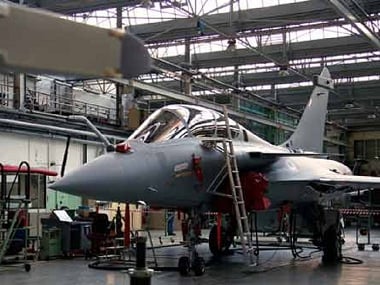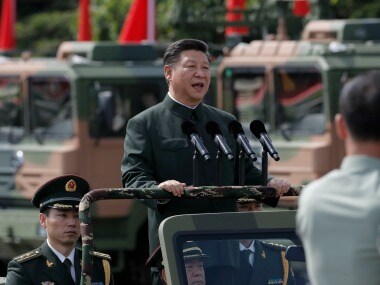As accustomed as we are to politicians wasting the taxpayers' money and turning up dead to the world when actual service to the nation is required, Minister of State for Defence Dr Subhash Bhambre's report on the rot in the defence acquisition process is commendable. Not that just about everyone in the business is unaware that getting a deal through in India requires some technical skill, large public relations exercises, endless trips to the Ministry of Defence and an almost god-like amount of patience. Even with that knowledge, however, the report makes for a shocking read.
In a stinging indictment of the Ministry of Defence and the Ministry of Finance, the report notes "multiple and diffused structures with no single-point accountability, multiple decision heads, duplication of processes with avoidable redundant layers doing the same thing over and over again, delayed comments, delayed decisions, delayed execution, no real-time monitoring, no programme/project-based approach (and a) tendency to fault-find rather than to facilitate."

Representational image. Reuters
As a result of this mess, of the 144 schemes contracted during the last three financial years, "only 8-10 percent fructified within the stipulated time period." It is a testimony to a few good officers that even that percentage got cleared.
The points made by the report are solid and reasonable. However, most of these have been made before by various earlier committees, both within and outside government. This is not to trivialise the report, but to point out that such recommendations were never followed for certain specific reasons, and to make some suggestions as to how to kickstart a process that has been talked about for decades, with nothing much to show for it at the end of the day.
First, the plea for better expertise all around – from the services to the ministry – in terms of how to evaluate and then clear a weapons system within the stipulated period, is inarguable. While the services will generally agree to new methods for improving the process, any effort to inculcate expertise in officials will be met with bureaucratic counter-arguments, followed by a 'consign to the future' policy.
This is a well thought out 'arrangement' where the file is sent for comments to multiple ministries or even outside the government. By the time it returns, a busy minister will have moved on to something else. So, lesson one for the estimable minister is – keep your eye on the ball and refuse the need for multiple counsels.
Task an institute to set up a course for the immediate term and commence it at the junior level. Good officers will welcome any learning process, while the deficient will find ways to get out of it. So, it would be wise to set this in stone and begin it quickly before objections become obstacles. It's not the ideal solution, but it’s a beginning.
Second, for the longer term, including the National Security Studies as part of the UPSC civil services examination. Persons with this background should be given preference for posts at the Ministry of Defence, finance and incidentally, also in the foreign services. It would also be advisable that universities offering such courses are refurbished, with better teaching staff, with specific qualifications in this area. Former defence and finance ministry officials, as well as former bureaucrats with specific skills, could be brought in, given the serious lacunae in this area in almost all of the departments offering these courses.
Third, a simple way of reducing the delay time is to insist on the process of bureaucratic handing over – takeover process. An official must make a direct and briefing to the next incumbent, and must not be allowed to take up his next posting until this is done in full. At the minimum, a month needs to allowed with both officials at the desk, with the one learning from the other. Delay in decision making is in part due to the resistance in passing on knowledge, which in turn leads to a 'reinventing of the wheel' each time a new official joins in.
Fourth, the suggestion that financial powers of the defence minister and below be increased is a sound one. However, it skips an important point, as to how much money there is to actually allocate for buying expensive equipment or allocating to even more expensive domestic projects. As the figures show, not much.
As expert studies indicate, the amounts allocated to buying new weapons for a – let's face it – depleted armed forces has been steadily reducing for years for two reasons. One, that the defence budget continues to remain within the range of roughly 1.54 to 1.6 percent of GDP, which translates into about 12 percent of central government expenditure.
With this virtual freeze, the services will have difficulties in even maintaining the present level of capability, forget modernisation. To put it simply, if your household budget doesn't include some money for refurbishment and keeping your walls intact, that black-eyed burglar will pretty soon be reaching in to grab your valuables. In this case, it is the core national security of the country – the defence of your borders – that is in danger. Increased allocations for ministry top decision makers is good, but also increase the kitty, urgently.
Fifth, a minister who argues for more funds, must also be confident that existing funds are being used wisely. At present, the lack of funding is also due to the refusal of the services to move towards a more streamlined force structure. The point here is not just that very high and unsustainable manpower costs have been ruinous to the armed forces. Manpower costs have eaten away at the budget, with pay and accounts taking up nearly 44 percent of the overall defence budget. The point, however, is that there is an unforgivable resistance to change. The world has changed in how it fights, the Indian armed forces haven't.
Sixth, and most importantly, the inability to cut manpower, in turn, arises from the inability of all three services to sit together and come up with a clear idea of the kind of wars that they expect to fight. The recent Joint Military Doctrine put out by the HQ Integrated Defence Staff is a step in the right direction, particularly in making it public.
Ideally, however, the services together with defence and finance ministry officials need to do an exercise to come up with a National Defence Doctrine that includes not only what it can do, but also what it cannot. The United States Defence Department had no hesitation in stating that it could not fight two and a half wars anymore, as budgets dropped after the cold war from those who are to fight, will give lucidity to decision-makers at the very top.
It is also the most important input into the forming of a realistic national security strategy. And yes, someone needs to put that down on paper. It's really high time and its meant for not just the world but should be so written as to be a tasking for the bureaucracy itself.
Published Date: Mar 01, 2018 17:07 PM | Updated Date: Mar 01, 2018 17:07 PM













